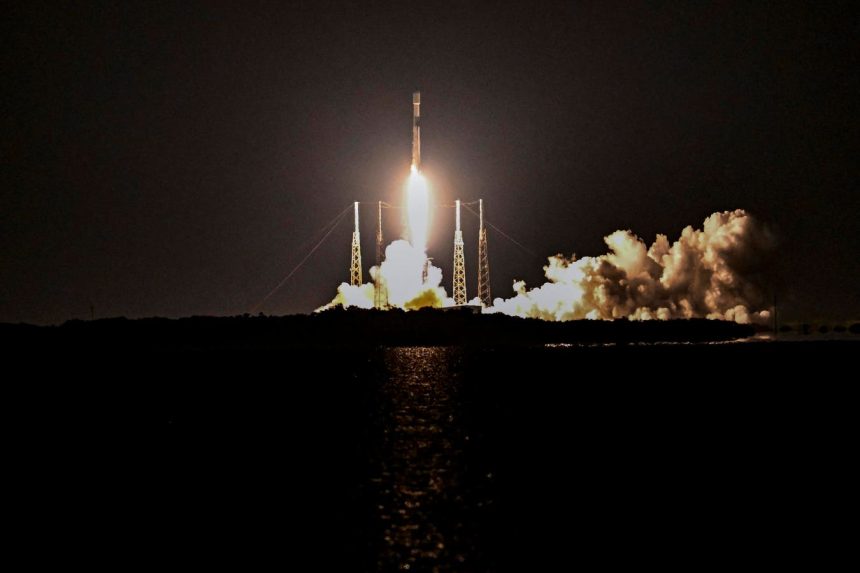The Biden administration’s Budget of the United States Government, Fiscal Year 2025 contains an outwardly modest but potentially pivotal policy proposal: the imposition of an excise tax on private space companies, such as SpaceX. At its core, the excise tax is an acknowledgment of the logistical effort borne by air traffic control whenever a rocket is launched—an occurrence that is becoming more common by the day, with the substantial increase in private satellite deployments over the last decade.
The proposal is not merely a government money grab or a “tax the rich” penalty levied on billionaire space entrepreneurs like Elon Musk—it represents the first policy steps to address a growing concern that could very well redefine how we allot and afford the use of near-Earth space.
The situation considered by the excise tax proposal takes a narrow view of a larger problem. While increased burdens on air traffic control are an emergent issue, the problem tax policy is going to need to get its arms around in the ensuing decades is the looming congestion of low-Earth orbit—an unquestionably vast expanse that can nonetheless become perilously crowded if deployments continue at the current pace. An excise tax is a wise and necessary first step, but it must be made with an eye towards a more comprehensive space tax policy.
Space Tax
The budget proposal is functional first step to begin internalizing the externalities wrought from private space flight—the short-term costs are unquestionably most evident in air traffic control. Using the internalization of that cost as a wedge to pursue broader policy initiatives that ensure the ongoing low-Earth congestion caused by increased satellite deployment is calculated and compensated for is an excellent long-term solution.
Simply applying the policies of property tax here on earth to space is fraught with issues, as the space in low-Earth orbit lacks the metes and bounds one typically expects for purposes of calculating and levying such a tax. Put simply, it is difficult to put a value on a given area of space. But the core concept is sound and translatable: that is, injecting market forces to ensure the cost of deploying a satellite isn’t solely limited to the launch and deployment, but the “space” taken up by the deployed satellite is also accounted and paid for.
Thus, any space property tax must take into consideration things like the size of the satellite deployed, the lifespan of the satellite, and how it’s safe removal from operation has been designed for. The tax would encompass compensation to society for the use of the space and a contribution to a fund for mitigating future issues. The levied tax should thus also account for the frequency of launches, the operational altitude of the satellite, and the potential for collision.
One policy element of a property tax is that it disincentivizes the unproductive use of land. A piece of prime real estate in an urban center that the owner leaves as an empty lot will nonetheless have a property tax bill attached to it. The higher the property tax, the more motivated the owners are to make the most productive use of the property possible. The same can be translated to space, where an ongoing space property tax charged to the entity that launches a satellite can help incentivize the productive use of that satellite and the space it occupies—and encourage satellite owners to plan for end-of-life removal.
Ensuring there is an ongoing cost for a satellite in orbit makes certain that the calculation for a would-be deployment is not simply whether the satellite is worth the cost of deployment, but whether it is worth the ongoing cost of orbit. Such a tax can be part of a larger design and deployment policy, encouraging private companies to consider carefully the necessity and design of their satellites. These considerations must encompass everything from limiting size to outlining end-of-life debris mitigation strategies, thereby more generally promoting responsible and sustainable use of space.
International Component
International collaboration and cohesive cross-border policymaking will be indispensable tenets of any success space tax policy. The challenge of managing low-Earth traffic and preventing congestion and collisions, obviously, transcends the surly bonds of earth—much less national boundaries.
Existing policy frameworks, such as the Outer Space Treaty and other policies of the United Nations Office for Outer Space Affairs, already lay out foundational principles for the peaceful use of space. As we venture further and the number of satellites multiplies exponentially, these agreements must evolve from their Cold War considerations towards sharing the burden of monitoring, mitigating, and compensating for space debris.
The need for such cross-border cooperation is made clear by the inherently global impact of space activities—from global communications to weather forecasting and defense, the continued productive use of low-Earth space is of the utmost importance to each and every government. Consequently, overexploitation causes risks to all, from increasing risk of satellite collision to the potential for significant disruption of satellite services, with all the societal and political challenges that may ensue.
Any successful space property tax policy will need to be developed and implemented internationally, through dialog with the international community, negotiation between stakeholders, and the establishment of shared objectives and concerns. This will not be without challenges—after all, cross border tax issues have proven a thorny issue even here on boring old earth.
Looking Ahead
In the nascent stages of exploration and development, we seem to have a recurring tendency to view new frontiers and the resources contained in them as limitless expanses. Often, unchecked exploitation follows. This has led to the thoughtless consumption of bounties found here on earth—from diverse ecosystems of newly discovered lands to the seemingly inexhaustible fauna we find there. We have, as a species, treated the oceans as bottomless pits for waste and the air we breathe as a relief valve for our toxins of industry.
Historically we have learned our lessons too late, but in the case of the productive use of space we needn’t—we can make a shift towards sustainable stewardship now and head off the issue now, at the relative early days of private satellite deployment.
Read the full article here
















